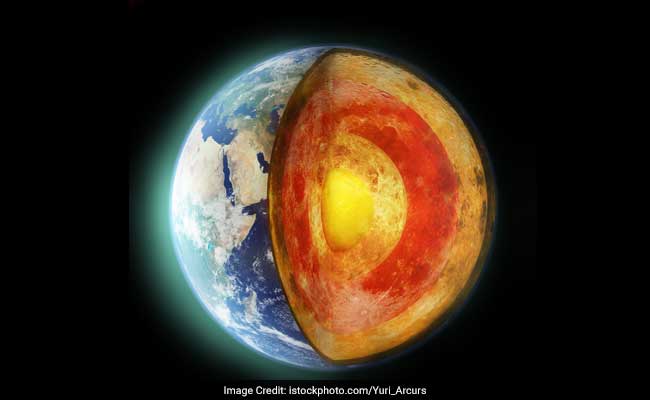2024-06-15 05:13:45

Researchers said that the slowing down of Earth’s inner core could change the length of one day
New Delhi:
A new study has provided “unambiguous evidence” that the Earth’s inner core began to slow down its rotation since 2010, compared to the planet’s surface.
Researchers said that the slowing down could change the length of one day on the Earth by fractions of a second.
The Earth’s inner core, a solid sphere made of iron and nickel, is suspended within the liquid outer core (made of molten metals) and anchored in its place by gravity. Together, the inner and the outer core, form one of the planet’s three layers — the other two being mantle and crust.
Being physically inaccessible, researchers usually study the core by analysing the recordings of waves sent out by earthquakes — seismograms.
“When I first saw the seismograms that hinted at this change, I was stumped,” said John Vidale, a professor of Earth Sciences at the University of Southern California, US.
“But when we found two dozen more observations signalling the same pattern, the result was inescapable. The inner core had slowed down for the first time in many decades,” said Vidale, also the corresponding author of the study published in the journal Nature.
The slowing down of the inner core is hotly debated in the scientific community, with some studies even suggesting that it rotates faster than the Earth’s surface.
It is known that the spin of the inner core is influenced by the magnetic field generated in the outer core and the gravitational effects within Earth’s mantle.
However, it is considered that the inner core is reversing and backtracking relative to the surface, because of rotating slower than the mantle for the first time in about 40 years.
“Other scientists have recently argued for similar and different models, but our latest study provides the most convincing resolution,” Vidale said.
A study published earlier this year, in the journal Nature, had found that climate change-driven melting of ice in Greenland and Antarctica was affecting global timekeeping by slowing down Earth’s rotation.
The author, Duncan Agnew, a geophysicist at the University of California San Diego, showed that the Earth’s liquid core was slowing down in its rotation. To counter the effects of this, the solid Earth was rotating faster, said Agnew.
However, this has resulted in fewer ‘leap seconds’ being needed to be added to the Coordinated Universal Time (UTC) in recent decades, according to Agnew.
Since 1972, once every few years, a ‘leap second’ has been required to be added, owing to irregularities in the UTC arising out of the fact that the Earth doesn’t always rotate at the same speed.
For the latest study, the researchers looked at seismic data recorded from 121 repeating earthquakes – multiple quakes occurring in the same location – between 1991 and 2023 in the South Sandwich Islands, a remote archipelago in the South Atlantic Ocean. The islands are prone to violent earthquakes.
Data from twin Soviet nuclear tests between 1971 and 1974, along with multiple French and American nuclear tests from other studies of the inner core, were also included in the analysis.
(Except for the headline, this story has not been edited by NDTV staff and is published from a syndicated feed.)
Length Of A Day,Earth's Inner Core Slowing Down,How Long Is One Day
Source link
![]()



